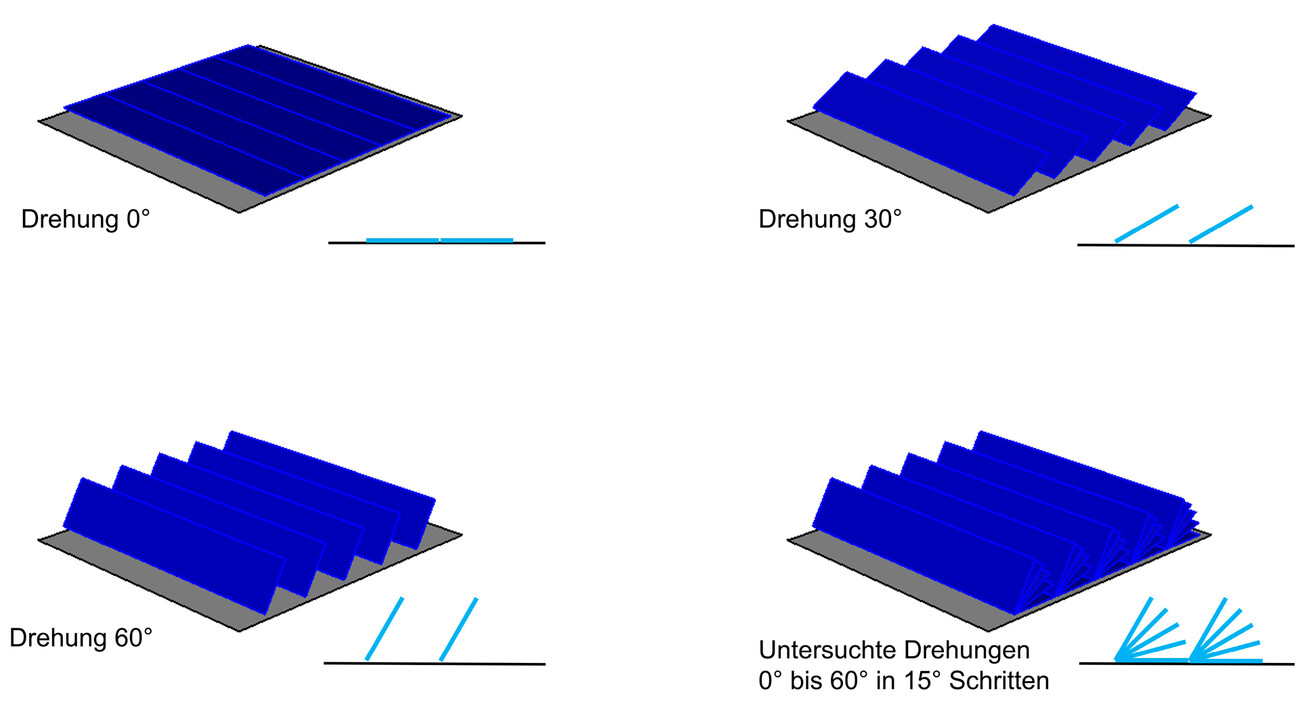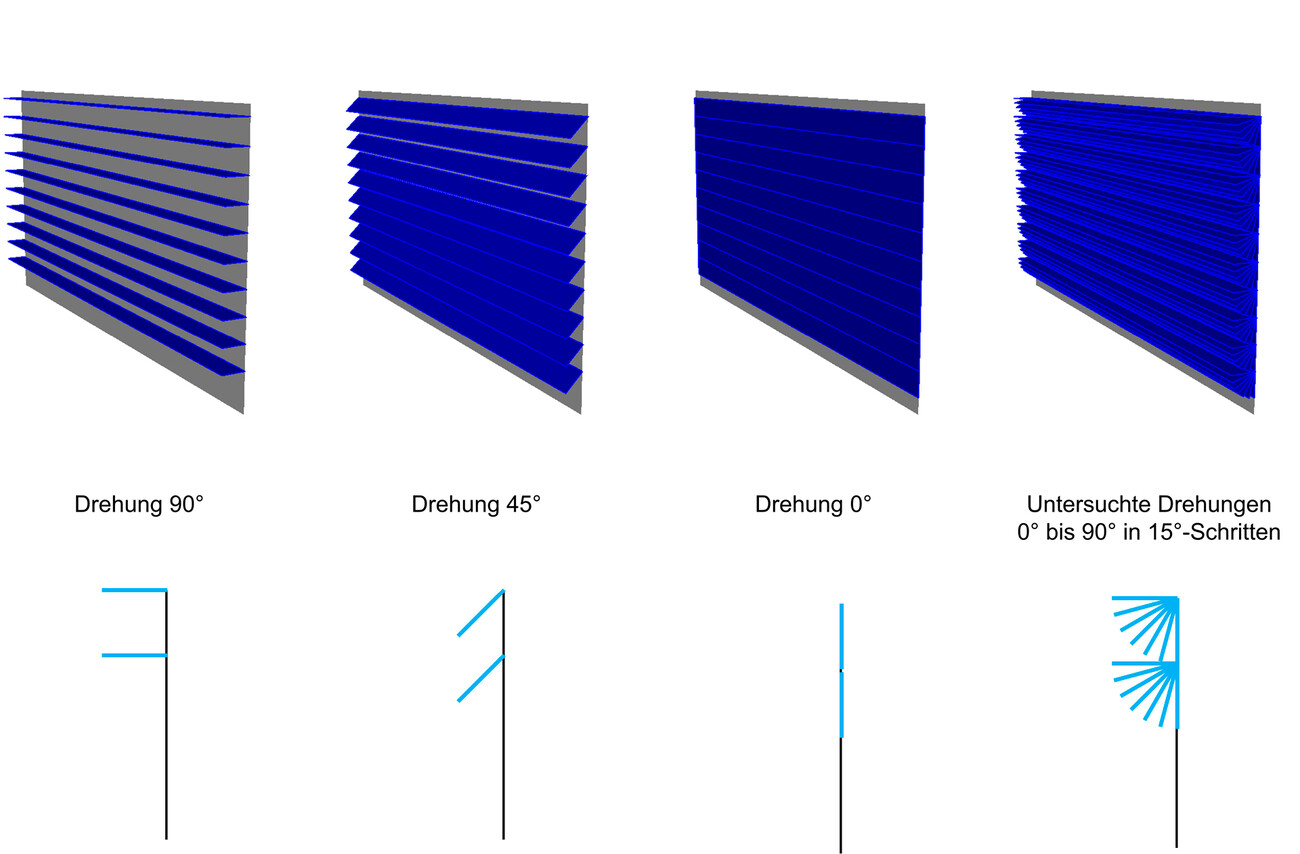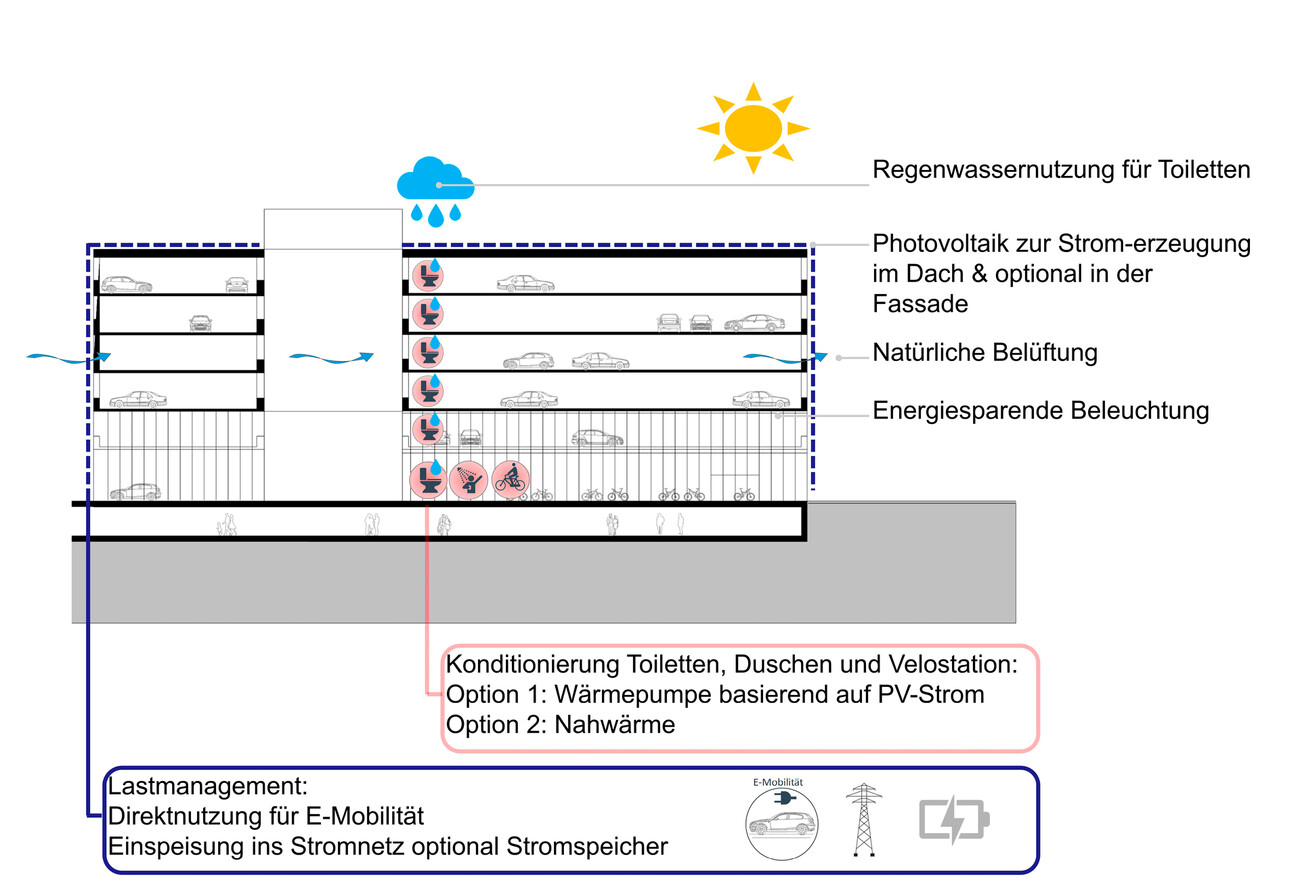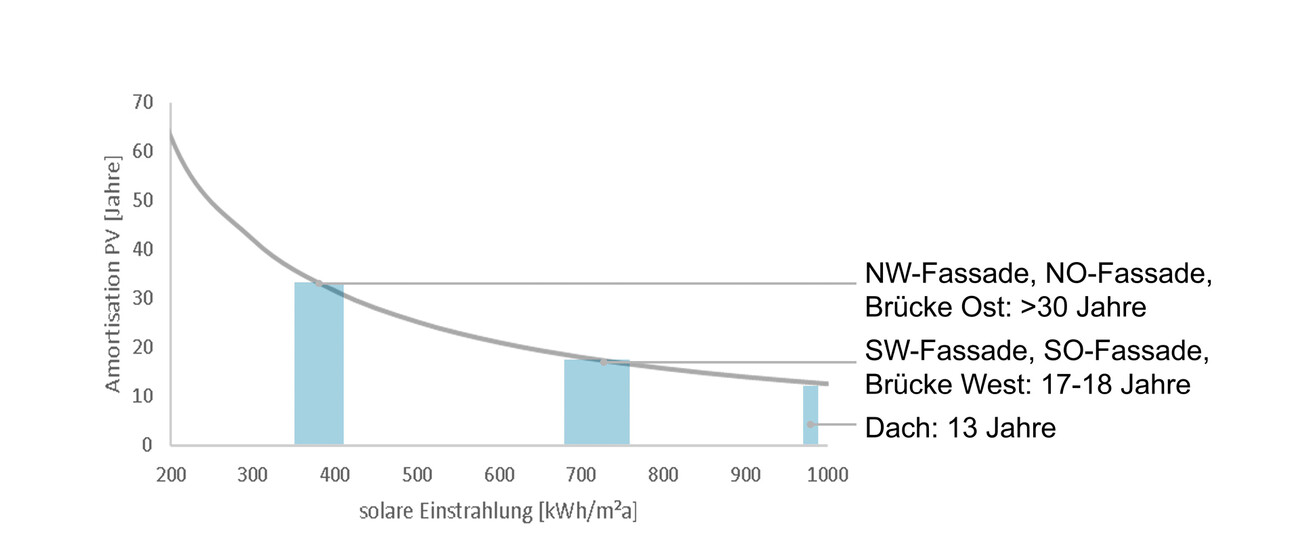Feasibility study +Energy Carpark Lux Airport, Luxembourg

During the feasibility study, Transsolar was commissioned to develop and evaluate the theme of the „plus energy” parking garage. Detailed simulations were carried out on the orientation and position of photovoltaic (PV) elements, which were also economically evaluated. An overall energy and water concept was created. It is feasible to build this „plus energy” parking garage, i.e. a building that generates more energy than it needs during operation.
The multi-level parking garage requires little technology for supply. The main system is the PV to generate electricity, and, if applicable, the electricity storage. Only bicycle station, toilets and showers have a supply/exhaust air system and are basically conditioned. Heat is supplied by a heat pump.
Lighting accounts for the largest share of the electricity requirements for the garage. Transsolar therefore recommends efficient and well-regulated lighting.
Passenger elevators are planned which use electricity particularly efficiently, thanks to energy recovery, among other features.
In case the solar power shall be used locally and directly, utilizing the airport terminal is an additional option.
In summary, the results show that PV as a flat-roof system delivers the highest electricity yield. Their economic efficiency also scores well with a payback period of 13 years. PV systems on facades produce less yield, especially if they are oriented to the northeast and northwest. In that case they only pay off after more than 30 years and are thus questionable. The recommendation is to realize the facade systems on the south-east and south-west side (amortization 17-18 years). The development of a load management system will take place in the next phase.
The energy balance for the „plus energy” parking garage shows a clear surplus, even if only the roof PV is installed. On the roof area alone, the PV can generate 850 MWh more electricity within a year than is consumed during operation. For comparison: an average electric car could cover about 6.5 million km (> 4 million miles) with such an amount of energy.



